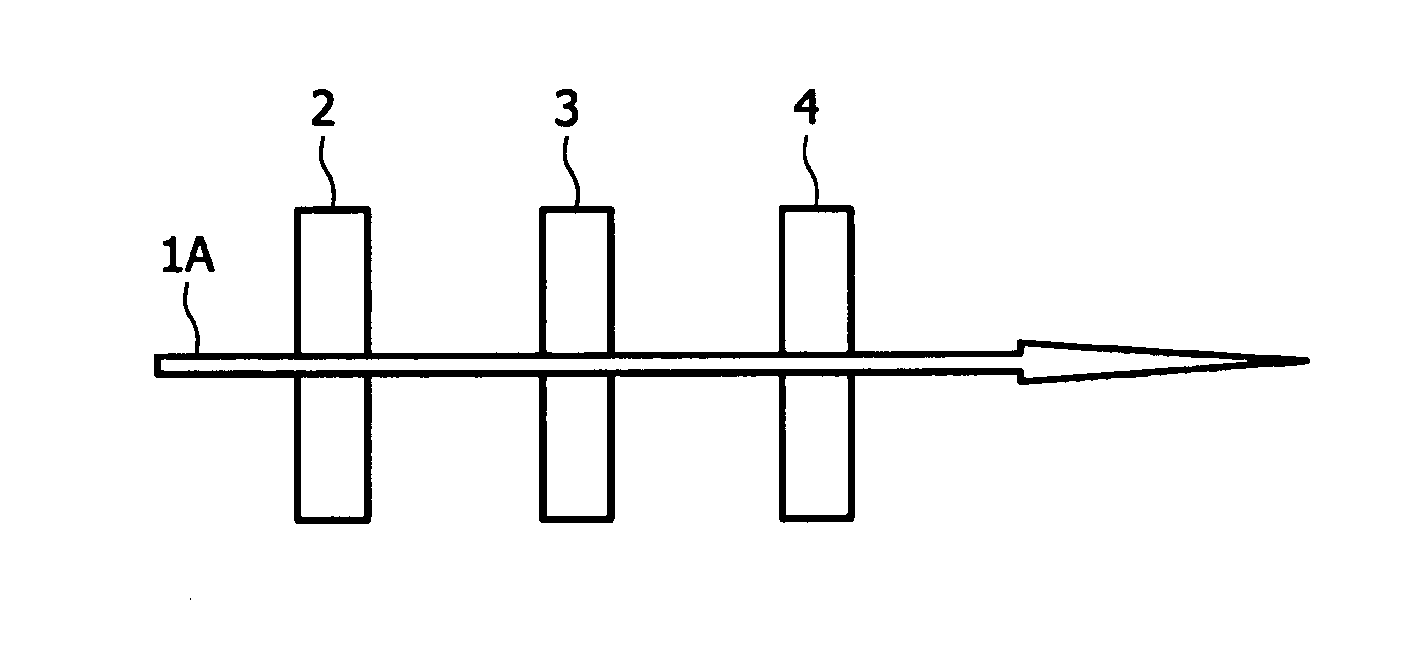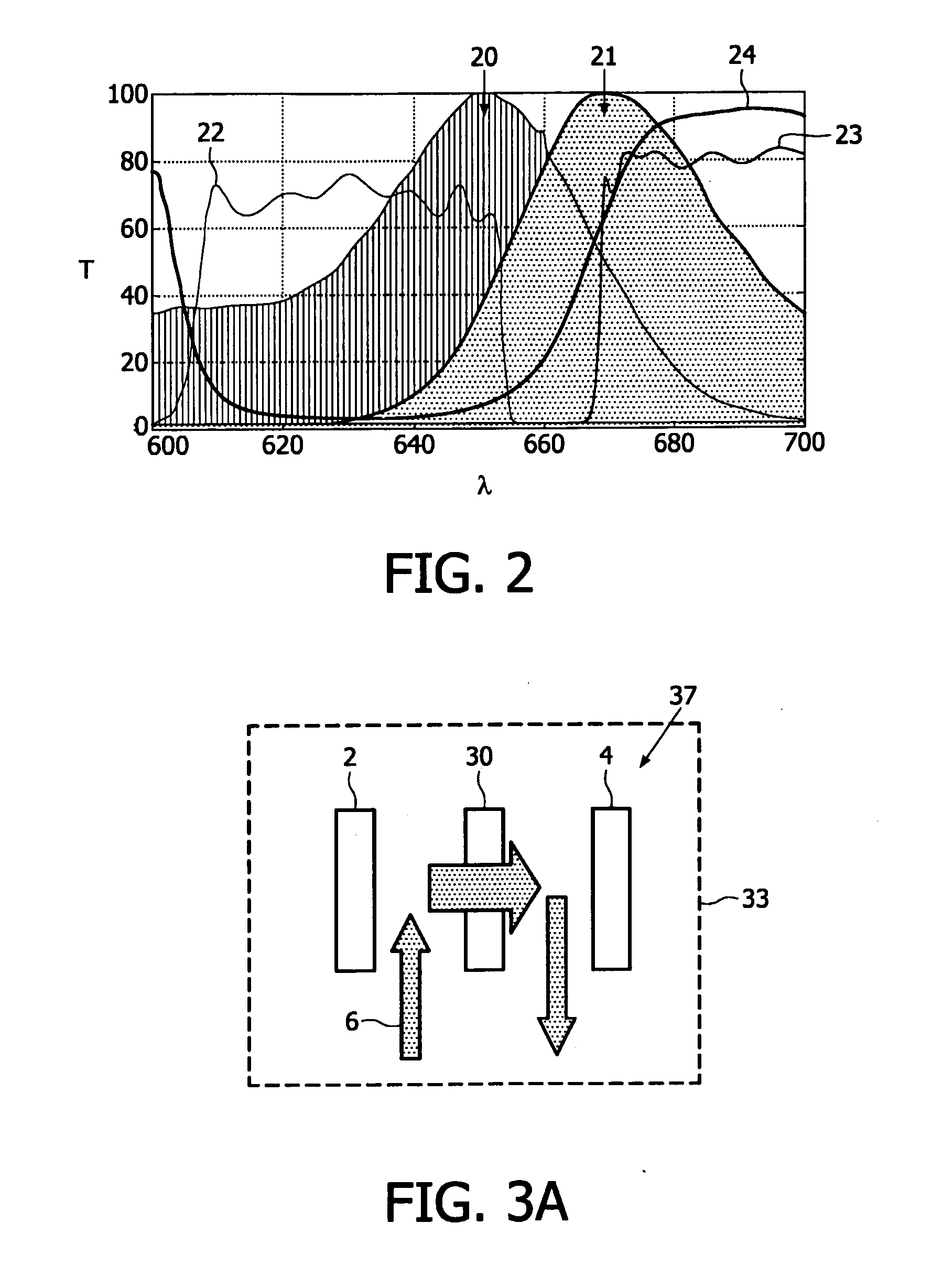Detecting target molecules in a sample
a target molecule and sample technology, applied in the field of detection of the presence of a target molecule in a sample, can solve the problems of reducing the number of different types of substrates that may be used, increasing etc., and achieve the effect of reducing one or more, and reducing the cost of substrates
- Summary
- Abstract
- Description
- Claims
- Application Information
AI Technical Summary
Benefits of technology
Problems solved by technology
Method used
Image
Examples
Embodiment Construction
[0040]In biological research and medical diagnostics many biomarkers are detected with the aid of an attached fluorescent label. The apparatus generally used is a fluorescent scanner or microscope, but for specific applications dedicated equipment is made based on the same detection principles.
[0041]In a general embodiment of the present invention, an optical setup is used where at least two spectral filters are applied. FIG. 1 schematically illustrates two general embodiments. FIG. 1A shows a schematic illustration of a fluorescence detection device in a transmission mode where the resultant beam is transmitted through the substrate, whereas FIG. 1B shows a schematic illustration of a fluorescence detection device in a reflection mode where the resultant beam is reflected from the substrate. In FIG. 1A and 1B a light beam 1A, 1B is emitted towards a substrate 3. In order to separate the resultant fluorescent light beam form the illuminating non-fluorescent light spectral filters ar...
PUM
 Login to View More
Login to View More Abstract
Description
Claims
Application Information
 Login to View More
Login to View More - R&D
- Intellectual Property
- Life Sciences
- Materials
- Tech Scout
- Unparalleled Data Quality
- Higher Quality Content
- 60% Fewer Hallucinations
Browse by: Latest US Patents, China's latest patents, Technical Efficacy Thesaurus, Application Domain, Technology Topic, Popular Technical Reports.
© 2025 PatSnap. All rights reserved.Legal|Privacy policy|Modern Slavery Act Transparency Statement|Sitemap|About US| Contact US: help@patsnap.com



